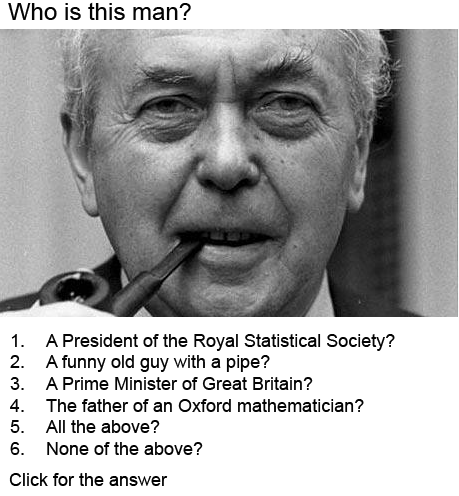Role of a Statistician
An old saying, perhaps originally by Sir Francis Bacon (1561-1626), described mathematics as "the handmaiden of science". The rise of statistics as a discipline supporting much scientific endeavour in the twentieth century meant that this term was often seen as particularly applicable to statistics. Starting with the work of Sir Ronald Fisher (1890-1962), who revolutionised agricultural experimentation, the statistician was there to make sense of the masses of data that was being produced by scientists. This is the model that is usually taught to students of statistics.
It is worth asking whether this is really the most appropriate model - should statisticians serve, should they be equals or should they lead? As always, the answer depends upon the context and upon the individual. But it is worth noting that the work of Fisher demonstrated the need for statisticians to plan science - his designs for agricultural experiments made that area of science many times more productive by exploring several factors at once.

Modern day examples include the genome-wide studies by international teams led by the Wellcome Trust Centre for Human Genetics in Oxford. These have highlighted genetic associations for many common diseases of mankind through simultaneously examining thousands of genome locations in thousands of people, an approach that harks back to Fisher. The high profile Director of the Wellcome Trust Centre for Human Genetics, Professor Peter Donnelly (incidentally, an Australian), is seen by the public as a geneticist, but his training is as a statistician. I would argue that such science needs statisticians and mathematicians as leaders since they have the skills to both plan the ambitious data collection and to develop the means of analysing the data.
As a consulting company, Data Analysis Australia has to find the best model for each project and this means that we use all three approaches - as experts supporting a project, as equals with other professionals or as leaders of the whole. In the latter mode, Data Analysis Australia has often broken new ground simply because statisticians and other mathematicians will often bring a new perspective. Combining the talent of learning new areas quickly (essential when moving from one project to another in a support role) with the rigour and logic of mathematical training, our experience is that the statistician can often provide innovative and agile leadership.
An example of this is Data Analysis Australia's work in the justice area. This has mainly involved forecasting demand for facilities such as court complexes with their mix of courtrooms, mediation suites, judicial offices and support facilities. The issues are complex, involving demographic projections, an understanding of trends and spatial variation in crime, how courts process matters, changes in legal procedures and the need to understand the planning decisions that the forecasts are used for. The data available to quantify these issues is usually collected for normal operations of the courts and it can be a challenge in using it for this planning purpose.
Early in this process it became apparent that the statistician's skills were ideally suited to combine this mix of issues and information to come up with the best practical solutions. A statistician can evaluate information and make decisions on what data will be useful. Similarly, the relative importance of various issues can be assessed by their quantitative impact on the certainty of forecasts. Finally, the statistician is at home with the seemingly unpredictable day-to-day experience of the courts where many cases come into the system or are settled hour-by-hour. In such an environment the statistician is often the one who is best placed to make judgements, and hence lead certain aspects of planning.
So the role of statisticians is changing, through both the availability of large volumes of data and the recognition that informed decisions are sometimes best made by those who understand how such data might be used. However, the profile of the statistician remains low, with many known only by the area where their work was applied rather than for being a statistician. That is a challenge for the profession.
June 2012
